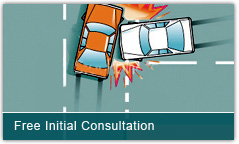POLICE INVOLVEMENT
The engineers at Forensic Dynamics Inc. have extensive experience in dealing with police issues. There are two common situations that arise involving police where our engineers can assist. (Naturally, both for the Defence and for the Plaintiff).
Police Shooting/Use of Excessive Force
Often, there is an allegation by Plaintiff of excessive use of force by police. Sometimes, police counter with the allegation that their life was in jeopardy and they needed to take deadly force to alleviate the threat. Many times this involves vehicles, which are driven toward police officers. In these situations, it is imperative that we establish the bullet trajectory into the suspect vehicle, and as well, to locate the spent casings, in order to determine where police officer(s) were positioned at the time shots were fired. Often, this will require a ballistics experiment using the actual gun, and the actual officer involved. This can confirm the acceleration rate and/or speed of the vehicle as it approaches the police officers.
Nowadays, most police vehicles are equipped with some type of dash cam that records video, and perhaps audio. We can use this information, as well, to determine oncoming vehicle speeds and other important scene artifacts. If so equipped, the audio from the dash cam can be split to analyse, in excruciating detail, to determine the number of bullets fired, and their duration.
Other sources of information have also become available. These include variations of automatic vehicle location system data (AWL), radio transmissions (i.e., logs), and silent witness data, which can be used to identify what occurred in the moments leading up to the incident.
Police Chases
Another large segment for Forensic Dynamics Inc.'s engineers, with respect to police involvements, is the police chase. Typically, an injured Plaintiff will assert that a police chase was underway and this is what caused the fleeing vehicle to be involved in an impact. Sometimes, police chases are called off prior to impact, and the question arises as to whether or not, indeed, a chase was underway. In these circumstances, once again, Forensic Dynamics Inc.'s engineers look at the audio taken from the dash cam or radio sources. We can filter this audio to determine whether sirens can be heard in the background. Indeed, often video from the dash cam will show whether the flashing lights were on or off. (This is particularly so during night time events). It is also possible to determine from the radio log, if it exists in raw form, whether sirens are activated.
Naturally, the primary interest in these cases is how fast the police vehicle is travelling. Since, most often, the police vehicle is not involved in the collision, we are unable to use typical accident reconstruction methods. In this circumstance, it is useful to have the radio log in conjunction with an aerial photograph to determine average distance travelled over time between call-outs. In this fashion, an average velocity of the police vehicle during its pursuit can be extrapolated. Another major issue in these circumstances is the distance between the police vehicle and the fleeing vehicle, and whether or not the suspect would reasonably be in a position to observe the police vehicle from the calculated distance. Surprisingly, other methods to determine the distance between the vehicles often exists. This may include video from other sources (for example, a convenience store parking lot), or interpretation based on information provided by eye witnesses. Most police vehicles nowadays also have AVL data, which can be seamlessly correlated with the suspect vehicle information to determine, from a geometrical standpoint, how far in time and distance the vehicles are apart.





